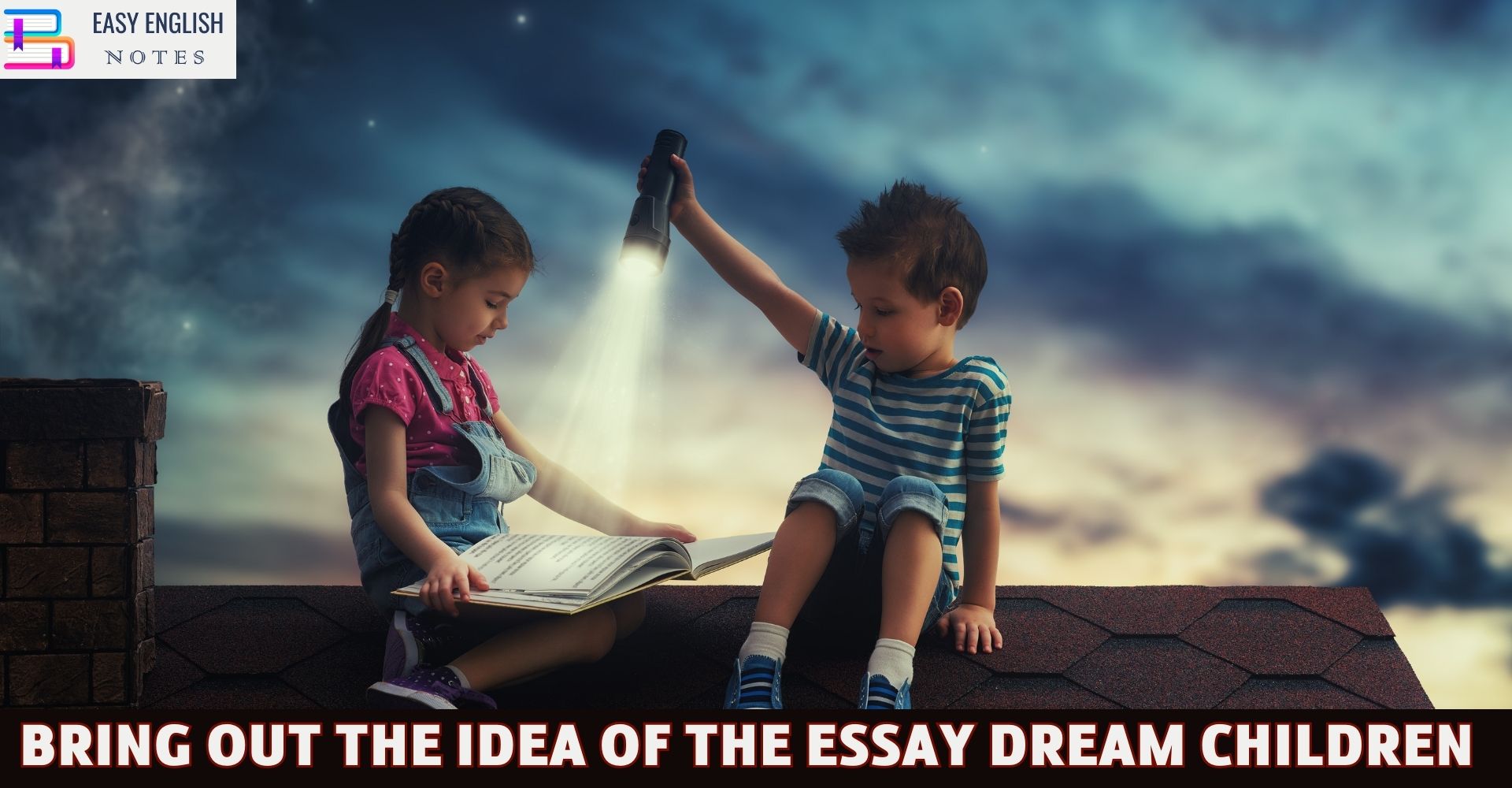Dream Children is a personal essay written by Charles Lamb, an essayist of the Romantic age. In the eighteenth century, the essay was an impersonal art dealing with social criticism. An essayist like Joseph. Addison called himself a Spectator, Richard Steele styled himself a Tatter. Charles Lamb was influenced by the imaginative favour of the Romantic Revival. He was a dreamer of dreams, there is a blend of fiction and fact in the essay of Lamb. He called himself Elia and his essays came to be known as the essays of Elia.
Dream Children is a reverie. The author fell asleep, and he had a dream about the course of his life he had been.
The essay begins on a casual note. The author recalls memories of his grandmother, Mrs. Field and her palatial mansion with a big garden.
The girl whom Charles Lamb loved, was married to Bertrum. He remained unmarried in order to look after her unmarried ailing sister Mary Lamb, whom he affectionately called “my faithful Bridget. The personal frustration in love finds a highly emotive expression in this personal essay. In his dream, he is in the company of his two dream children-Charles and Alice, two sweet little creature. They are portrayed realistically in their response to the essayist’s account of his reminiscence. These two children make their own individual gestures and postures. Mrs Field was an affectionate lady in the big mansion. The garden was the play-ground of Lamb’s children. Children used to gather flowers and fruits from the garden. The simple realistic details give an air of verisimilitude to the story. The essayist creates an illusion of reality and an atmosphere of suspense. The reader does not know that he has been reading the details of a dream till he comes to the end of the essay when Charles Lamb refers to his waking up from a state of trance or reverie or brown study. Finally the essayist tells us the truth that Charles and Alice were not children at all. They would have to wait millions of years before they can be born as Charles Lamb’s children. In their present existence, they call Bertrum father. The dream-vision ends when the essayist wakes up and comes back to reality to find her faithful sister Bridget by his side. Like Keats in Ode to a Nightingale Charles Lamb can say.
Was it a dream
Do I sleep or do I awake.
Also Read :
- Compare Hamlet with Macbeth, Othello and other Tragedies
- “The Pardoner’s Tale” is the finest tale of Chaucer
- Prologue to Canterbury Tales – (Short Ques & Ans)
- Confessional Poetry – Definition & meaning
- Line By Line Explanation Of The Poem The Eve of St. Agnes
Dream Children is a human document. It is an artistic fusion of humour and pathos, of smiles and tears. The essay presents an April-blend of sunshine and tears. Humour arises when Charles and Alice-the dream children-respond appropriately to their dream father’s recital of his reminiscences. This model of a perfect personal essay is a fragment of Lamb’s personal autobiography. In Dream Children, Charles Lamb transmits his private and personal sufferings into something rich and strange. The essay is a prose- poem. It has the emotional intensity of a lyric. Virginia Woolf in her essay on The Modern Essay says that an ideal essay casts its spell upon us with its first word and we wake up, refreshed with its last. An ideal essay, so to say, draws a curtain round us. The essay gives vent to poignant feelings of Lamb’s frustration in love as well as his hunger for children in this moving testament of his loving imaginative nature. His romantic sensibility is tempered with his sense of realism.
Dream Children is a typical romantic essay. It is an artistic record of the essayist’s inner life. It is a testament of faith, it is a moving piece of autobiography made into a fine pure-lyric. Indeed, Lamb is a prose-poets. His prose shows us the virtue of poetry. Dream Children is an ideal personal essay, an ideal prose-poem. It creates the unity of impression like an ideal short essay written in the stream-of-consciousness technique.
PLEASE HELP ME TO REACH 1000 SUBSCRIBER ON MY COOKING YT CHANNEL (CLICK HERE)











